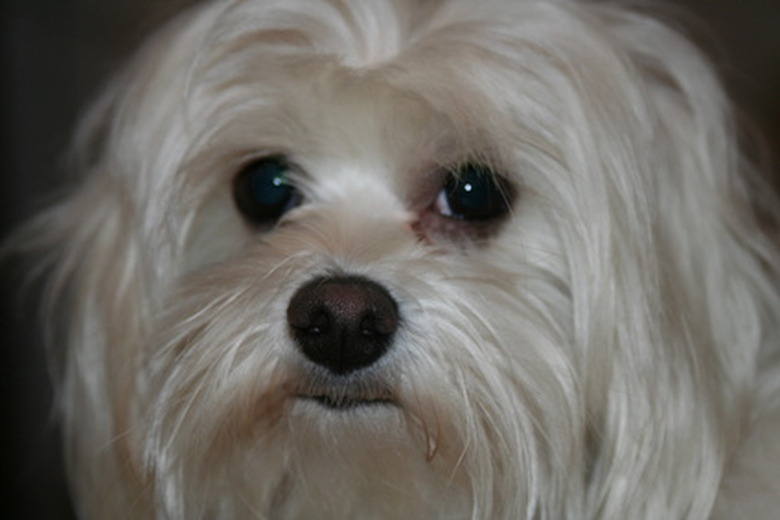Dog Hair Follicle Infection
If your dog is scratching himself more than usual and you notice tiny scabs and bumps on his skin, he may have infected hair follicles, also known as folliculitis. There are several potential causes of folliculitis, and it may take some investigating before you find out what's affecting your dog. There are many skin conditions that commonly affect dogs, and they share a lot of the same symptoms, which can make getting a diagnosis difficult. A dog's skin issue could be a sign of a more serious problem, so it's always best to get it checked by your vet.
Causes of a dog's inflamed hair follicle
Causes of a dog's inflamed hair follicle
Folliculitis isn't a disease on its own. It could result from an underlying infection, disorder, or systemic disease. Bacteria is the most common cause of folliculitis in dogs. Overpopulation of bacteria that naturally live on the skin or introducing a new type of bacteria could create an imbalance and infect the hair follicle, or it could be secondary to a fungal or parasitic infection, like if a fungus, such as ringworm, or external parasites, such as fleas or Demodex mites, triggers inflammation within a dog's hair follicle.
Folliculitis could be secondary to an overactive or underactive immune system or a more serious systemic disease, such as hypothyroidism or Cushing's disease. Make note of recurring skin or hair follicle infections and changes in the skin and coat. Try to think of any other symptoms, such as frequent urination or increased thirst or hunger. It could help narrow down the cause.
Signs and symptoms
Signs and symptoms
The hair follicles that are most often affected are in areas where there's a lot of friction or contact, such as the armpits and abdomen. Folliculitis is often very subtle in the beginning, especially for long-haired breeds. It may not be noticeable until it's in its advanced stages. If your dog has folliculitis, there are some symptoms you might notice:
- Small, red bumps that look like pimples
- Patches of hair loss or thinning coat
- Redness
- Hyperpigmentation
- Scabs
- Blackheads (like your dog has clogged hair follicles)
Your dog's groomer may be a great resource for learning about the condition of your dog's skin and coat. The groomer might be the first to know if anything unusual shows up. If you groom your dog at home, take it as an opportunity to check his skin and see if you notice any lumps or bumps.
Breeds most affected by folliculitis
Breeds most affected by folliculitis
All dogs can develop folliculitis, but certain breeds are more prone than others:
- Jack Russell terrier
- Scottish terrier
- Shar-Pei
- Boxer
- Labrador retriever
- West Highland white terrier
- Wirehaired fox terrier
- Golden retriever
- Dalmation
- Bulldog
- Bull terrier
- Boston terrier
Getting a diagnosis
Getting a diagnosis
There are many conditions that can cause hair follicles to become infected, so your vet may run a series of tests to make sure you figure out the underlying cause. First, your vet will likely go over your dog's medical history with you and ask if you've noticed any other symptoms. The vet will examine your dog's skin and may take a skin scraping for analysis to see if external parasites, such as fleas, mites, or ticks, might be a factor. Bloodwork and a fungal culture may be part of the investigation to test for a potential fungal or bacterial infection.
Is folliculitis contagious?
Is folliculitis contagious?
Folliculitis is not contagious, but what's causing it could be contagious to other pets and possibly humans. Conditions such as mange or ringworm are highly contagious and difficult to treat. Until you know what's causing the inflammation, try to mitigate the spread of any potential disease.
